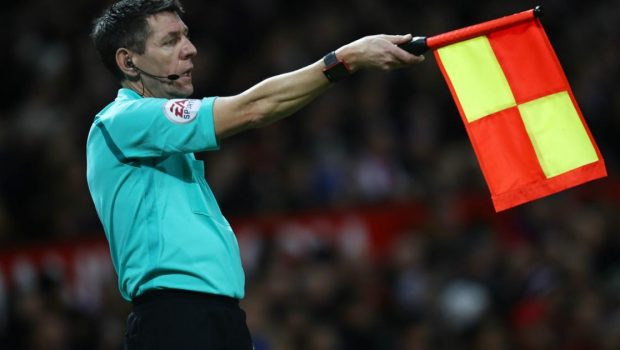Word Cup 2022: FIFA’s new semi-automated offside technology explained and how it will work with VAR
Technology and football have become increasingly connected in the past decade with fan opinion still divided over the positivity of the relationship.
FIFA and UEFA have led the way in bringing more technical aspects into football matches with a focus on referee support for major in-game calls.
Offsides and disallowed goals have formed the bulk of controversial officiating decisions, in both club and international football, with the game's governing bodies coming under pressure to act.
Video assistant referees were staggered into top-level football from the start of 2017/18 and, despite its controversy, VAR is now at the heart of the game.
FIFA is now planning to take innovation a step further at the 2022 World Cup in Qatar by introducing semi-automated offside technology.
MORE: New offside technology at FIFA Club World Cup could eliminate human error by football referees
World Cup 2022: FIFA's new semi-automated offside technology explained
Qatar 2022 will be the first FIFA men's World Cup to use semi-automated offside technology as part of a wider innovation plan at the tournament.
FIFA says the new system will offer "a support tool for the video match officials and the on-field officials to help them make faster, more accurate and more reproducible offside decisions on the biggest stage of all".
The tech was tested at the 2021 FIFA Arab Cup and 2021 FIFA Club World Cup ahead of being rolled out later this year.
Off-pitch officials will receive potential onside/offside alerts, with decisions evaluated away from the action before being communicated to the on-pitch referee to make a final decision.
Fans will also be shown how and why decisions are made via 3D animations on screen inside the stadiums with television viewers provided with an explanation.
How will the new offside technology work with VAR at the 2022 World Cup?
VAR systems will be used in Qatar, with the new semi-automated technology described as an "evolution of the present VAR offering", by FIFA president Gianni Infantino.
"This technology is the culmination of three years of dedicated research and testing to provide the very best for the teams, players and fans heading to Qatar later this year," he stated via a FIFA update.
The technology is more complex than current VAR and provides more 'eyes' on the action to give referees greater help.
NEW: Semi-automated offside technology to be used at FIFA World Cup 2022. Full details on @FIFAcom. Here’s how it works 👇 pic.twitter.com/qrDzjsXxph
— Bryan Swanson (@fifa_bryan) July 1, 2022
Twelve dedicated tracking cameras — mounted in the stadium roof — will track the ball in play, and up to 29 data points will be placed on each player, 50 times per second, calculating their exact position on the pitch.
Those data points will map each relevant point on a player's body, which can be considered active, to create a full picture of an offside call.
Alongside this, extra cameras will pinpoint player positions, and moving images of their bodies, while the new World Cup match ball will also play a role.
Each Al Rihla Official World Cup match ball will have a sensor placed inside it to send data to the video operation room 500 times per second to accurately assess the point the ball is struck.
Information on the selected kick point from the in-ball sensor, together with data points from cameras, provides an instant picture of the offside scenario to the officials in the video team and allows for a faster decision to be made.
MORE: Why the 2022 World Cup is being played in Qatar
When does the 2022 World Cup start?
The 2022 World Cup in Qatar starts on November 21 and concludes with the final on December 18.
While the tournament is the first to take place in the Northern Hemisphere's winter, it follows previous editions in terms of format, with a 32-team group stage from which the top two from each group will advance to the knockout rounds.
Those 16 group-stage teams will meet in the round of 16, where group winners will be pitted against runners-up from other pools in one-off matches that will be decided by extra time and penalties if necessary. The eight winners progress to the quarterfinals, from which four teams will move onto the semifinals.
The two winning teams in the last four will contest the final, while the losers will meet in a playoff match for third place.
- Group stage: Nov. 21-Dec. 2
- Round of 16: Dec. 3-6
- Quarterfinals: Dec. 9-10
- Semifinals: Dec. 13-14
- Third-place match: Dec. 17
- Final: Dec. 18








Gloss